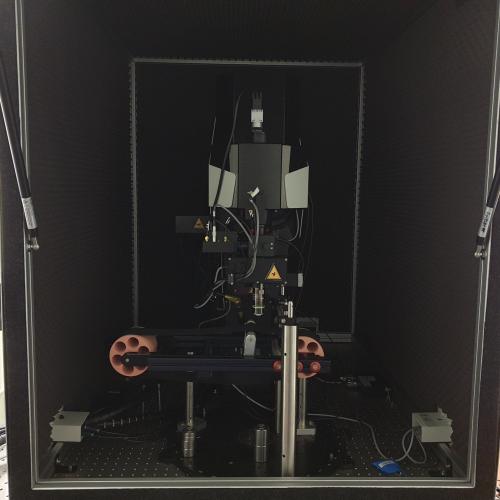The two-photon effect is a process in which a dye molecule is excited by absorbing two photons simultaneously. The cross section of such an event is usually very small, but its probability is proportional to the square of the photon density. In the two-photon microscope available in our core facility, at the focal point of the infrared laser pulse focused on the sample. The light intensity is generated so that the absorbing fluorescent dye in the visible range can be excited by the two-photon effect in a small volume around the focal point (~ 1 um3). Two-photon excitation does not affect parts of the sample outside the focal volume, thus reducing the cell-damage effects of laser beams that limit in vivo studies. Advantages: it can measure up to 800-1200 µm depth, focal excitation, large detection angle, tunable excitation laser wavelength, kHz sampling rate and three-dimensional images can be taken with a scanning method. This configuration is available in the Nano-Bio-Imaging Core Facility providing a platform for studying of brain activity in awake mice.
Microscope: Femto2D-SMART 2-photon microscope
Lasers: Mai Tai HP (690-1040 nm)






